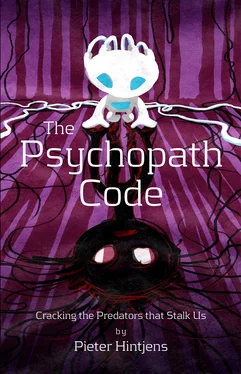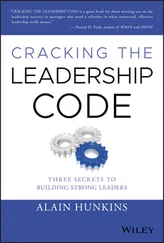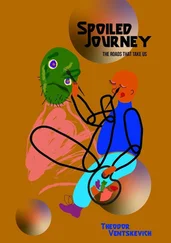Not that Alice is unique, or to blame. We almost all lie to ourselves, even the most honest and upright of us. Even Mallory lies to himself. It takes conscious and deliberate effort to see our own lies and step aside from them.
What Alice should notice most of all is the sheer volume of chatter from Mallory. It would be overwhelming were she not so eager for it. When they are together, it consumes their nights and their days. Alice feels like the center of Mallory’s universe. When they are apart, Mallory will text and call Alice non-stop. The phone companies love Mallory. He usually finds someone else to pay the bills, though.
Cult jargon and support forums call this "love bombing." It is a well known tactic to break resistance. Love bombing is a super-normal stimulus. It triggers a rush of dopamine in Alice’s brain that overwhelms. It is the same response as if she was ingesting fructose, or cocaine. We get a kick when someone we like talks to us. We get ten times that kick if they talk to us ten times. We get a hundred times the kick when they call us a hundred times.
This trigger and response is natural and necessary. It is how we bond. A social person can only give so much. It is exhausting to express deep emotions. Mallory pays little or no cost. His deep ululations of love and desire come from memory. They cost him no more effort than wagging a finger. He does what social humans cannot. He amplifies the trigger, and he drives the addiction deeper into Alice’s mind.
Alice starts to commit time and resources. Mallory watches her and chooses his moment. He has done this so often before. It is almost too easy.
Perhaps he will start slowly, when Alice is feeling most confident and intimate. A subtle comment after sex. A show of jealousy or insecurity. "Who were you thinking of, your ex?" A glum mood and argument that leaves Mallory a victim, and Alice searching anxiously for her fault.
Or, he may simply switch his attention to someone else, seen or unseen. Alice freezes, waiting for Mallory to return. It can be for minutes, or weeks. When he does return, it is without explanation or apology. He continues as if nothing had happened. If Alice makes a comment, he accuses her of being insecure, jealous, possessive.
Or he may strike more brutally, when she is feeling vulnerable. She twitches, does or says something that betrays uncertainty. Mallory lashes at her. How dare she? She stumbles, retreats, apologizes. It is what Mallory was waiting for. Fury fills him. Eyes wide, mouth in a snarl, he explodes in verbal abuse.
Alice has no words. It has all gone wrong somehow. Bewildered and in shock, she cannot react or process. She watches as Mallory takes his things and leaves. Come back, she pleads. And then he is gone. Mallory walks to a corner and makes some phone calls. He has business to take care of. Alice will be calling him, and hitting his voicemail. He’ll give her an hour or two. Whatever. It’s much the same. Alice is going nowhere.
There are many points in the relationship where Alice could break free. This is the most visible one. Mallory has left. It is over. Time to move on, yes?
Yet Mallory is a professional. This is what he does. Alice has as much free will as his phone. She will wait, and she will weep, and she will beg forgiveness. Alice always does.
When Mallory does answer her call, and returns, Alice is compliant. She is shivering from hurt, withdrawal, self-pity, and guilt. She does whatever Mallory asks. She takes all the blame, even though she does not understand what for.
This is the devalue stage of IDD, the withdrawal of affection. It is not a one-time event. It can start just a few days into a relationship. It can be subtle and creeping, or it can be dramatic and violent. Mallory does this over, and over. Break, and remake. Break, and remake. Alice goes fuzzy on the details, after a while. She tells no-one of it, and they would not believe her if she did. Mallory will remind her, often, of her crimes and his patient, forgiving nature.
It is the hallmark of an abusive relationship that Mallory acts highly sensitive, jealous, and volatile. At the slightest excuse, just as things seem OK again, he flips to violent argument, then to crisis. Sometimes he threatens to leave. Sometimes he packs his bags. Sometimes he just vanishes. Sometimes he kicks Alice out. It doesn’t matter. The goal is to push Alice to the edge, to destabilize her, break her, and train her.
After every crisis, Mallory withdraws, goes cold and distant. If Alice was smart, she’d watch Mallory go and wipe his number from her phone. Of course, she is desperate to get him back. She is an addict. She tries harder, and he relents and returns.
The burn comes back. Mallory knows how to make her cry from pleasure, as well as pain. She forgets the arguments. Whatever he wants, she will give.
Mallory does not forgive, nor forget, though. He tracks Alice’s crimes like an accountant. It forms part of the narrative. She will now and then try to resist Mallory’s demands. She will complain when he throws chaos into her schedule and life. Mallory responds with cold abuse. "You dare?" he asks, and he reads the ledger back to her.
Mallory never apologizes if he can help it. He never makes steps to repair the fractures, unless Alice is on the verge of walking out. His brutality is not personal. It is a negotiation strategy, part of doing business.
While my description above has Mallory the man, and Alice the women, it works the same way when Mallory is a woman, breaking Bob. For every broken woman explaining why she loves her abuser, there is a broken man doing the same.
People often stay in abusive relationships far longer than you’d expect. Abusive attachment is a counter-intuitive mechanism for everyone except psychopaths. These individuals understand it from youth, and practice it to perfection. For the rest of us, decoding the abusive bond is hard work. Yet it is a valuable exercise that teaches us much.
Let’s start with normal social relationships. Alice and Bob meet. They need each other in some way. Love, business, or friendship. They each invest time, money, resources, or affection in the relationship. It starts with small steps. They ease into larger commitments over time. They work to keep the relationship balanced. This is "normality," when both Alice and Bob are happy with each other. If either feels they’re not doing enough, they work harder until it is solid again.
Human social instincts are not perfect. There are at least three vulnerabilities in the bonding mechanism. These are triggers that Mallory can amplify to trap Bob or Alice. They are: sunk costs, future promises, and parental abuse. I’ll take these one by one.
The sunk costs fallacy is well known in economics. No-one has explained it well, so I will try now. The symptom is, "I’ve spent so much money on this house, it must be good by now!" We know the house has problems, yet the more we spend on it, the more we believe in it. Even the smartest of us falls into this trap, over and over. Houses, businesses, cars, hobbies, all kinds of projects.
How do we value a project? We could put it up for sale and see what offers people make. Yet we tend to form emotional relationships with our projects. That is why we care for them. To offer them for sale violates the relationship. One cannot put a money figure on a relationship. Instead, we count our investments in the project. And we guess how much we feel it has given us back. We add these up. If we do come to a figure, it will be high.
The origin of what I’ll call "social accounting" is clear. We’re a predator species that survives risk by mutual sharing. When we succeed in a hunt we have more than we can consume or carry, so we share with others. When we fail, we beg. On average this exchange works out and keeps us alive. Yet it is vulnerable to freeloaders who cheat by always begging, never hunting. To beat them, we evolved identity to track other individuals, and social accounting to track their behavior over time.
Читать дальше












